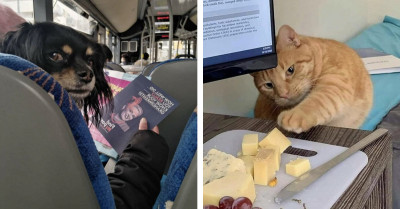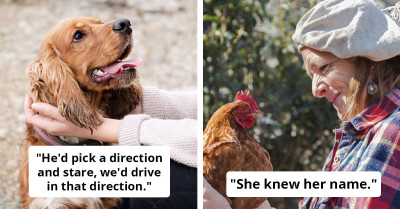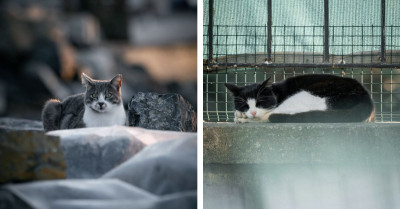46 Crime Cats Caught Mid-Heist and Are Weirdly Proud of It
There’s a face every cat owner knows. The pupils are wide. The whiskers are forward. The guilt is missing. Somewhere behind that expression lies a torn curtain, a raided pantry, or a plant that mysteriously flung itself to the floor. We tell ourselves they didn’t mean it. They look back like tiny masterminds testing the alarm system.
So, of course, the internet built them a stage.
On a fast-growing corner of Reddit, felines are living out their little heists in daylight. A black blur caught mid-pounce. A tabby sneaking off with snacks twice its size. A fluffy “innocent bystander” dusted in potting soil. Each photo reads like a freeze-frame from a caper movie; only the criminals are purring, and the detectives are laughing as they post the evidence.
The subreddit is called Crime Cats, and it hits a nerve many of us share. We know pets aren’t people, but it’s impossible not to project motives onto a cat that opens drawers or peeks over a laptop like a stakeout rookie. It’s playful, a little chaotic, and strangely comforting.
In a world that often feels loud and heavy, watching a cat attempt burglary on a loaf of bread feels like a small, perfect pause. Just take a look at these...
1. He insists he lives here now. No one remembers letting him in the first time.

The creator behind Crime Cats says the idea clicked while researching another cat community they help moderate. “I kept coming across cats in these situations. I thought maybe I should create a sub for cats in all sorts of ‘crime’ scenarios. Having cats all my life definitely helps, having seen them do the most hysterical things.”
2. Local cat identifies as a bird now. Community divided.

The instinct proved right. Launched on September 20, 2025, Crime Cats quickly pulled in tens of thousands of weekly visitors. The pitch is simple and irresistible.
“People love cats, and they also love to laugh. These two things just go hand in hand,” the creator told us. Posts range from “Dammit,” where a waffling suspect clearly rethinks the jump, to “We have a thief at home,” featuring a burglar who realizes the camera is rolling, to “Ms. Catalie Purrtman deserves to be here,” after a cat delivers a very surprising snack.
3. No thoughts, only rage and the zoomies.
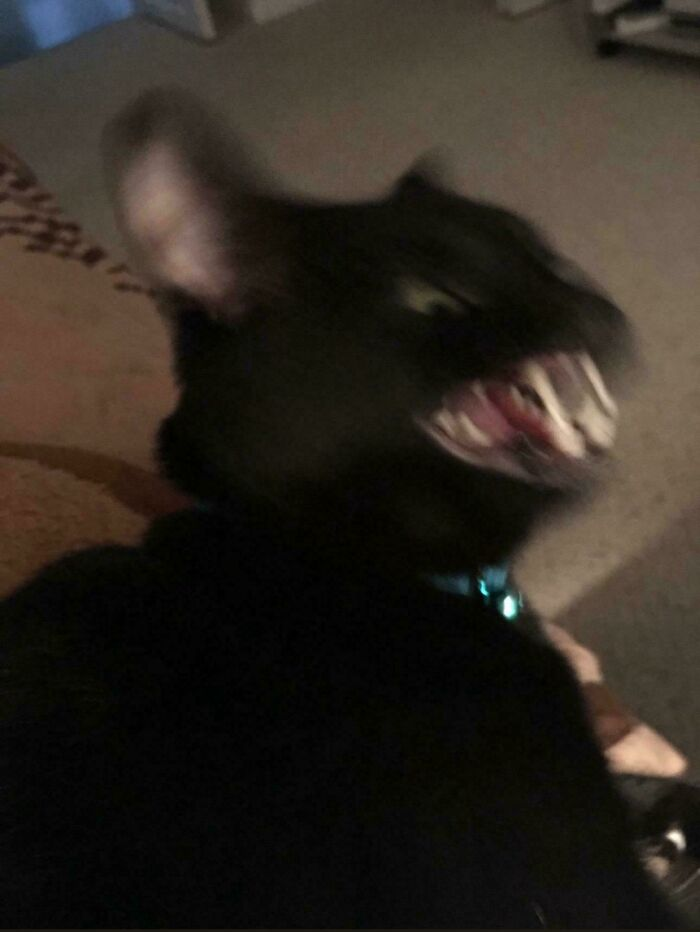
Feline Behavior Insights
Dr. John Bradshaw, an animal behaviorist, emphasizes that cats often engage in mischief purely out of curiosity, not malice. According to his research, this behavior is rooted in their natural instincts as hunters and explorers.
In a domestic setting, cats can find themselves in situations that encourage their playful yet destructive tendencies. Bradshaw notes that understanding this can help cat owners create a more enriching environment that satisfies their pets’ instincts without leading to chaos.
Why does this format work so well? Part of it is the comedy of contrast. Cats move like shadows, read rooms like detectives, then crash through blinds as if powered by pure chaos. But behaviorists say there’s logic behind the mischief.
“Cats must always be aware of what is going on in their surroundings. They can’t afford to miss an opportunity to eat, but they must also be cautious of any dangers,” says Mikel Delgado, Ph.D., Rover’s resident cat expert on The Pet People Panel. Curiosity keeps them scanning, testing, and sometimes toppling.
4. Caught in the act of enforcing her ‘snack tax.’

That drive starts early. Kittens investigate by watching, sniffing, tapping, and yes, tasting. The urge does not vanish with age, though older cats may become choosier about what deserves a closer look. Stephen Grand, Ph.D., once summed it up neatly.
“Lively minds are, by definition, curious.” Which is how we get suspects jammed in trash cans, perched on TVs, or “helping” with window blinds.
5. He said one more joke about hairballs, and it’s over.
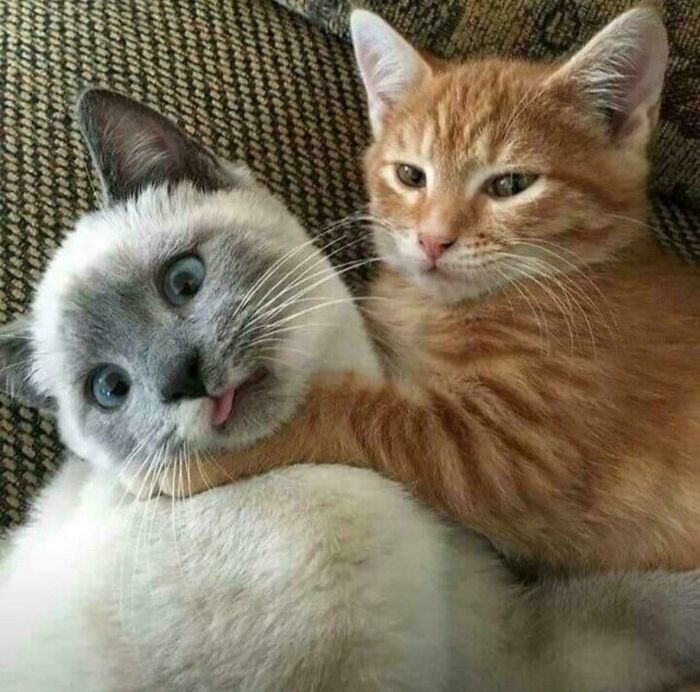
If curiosity turns chaotic at home, enrichment helps. Experts recommend 10 to 15 minutes of interactive play twice a day with feather wands or toy mice. Rotate toys so the hunt stays new. Offer food puzzles or hide small portions so dinner becomes a game. Build up, not just out, with cat trees and shelves for legal climbing.
A sunny window perch can turn the neighborhood into prime-time TV. Even a DIY obstacle course can redirect energy away from the fruit bowl and toward a victory lap that leaves the curtains intact.
6. The face of a cat who’s seen things… and chewed them anyway.
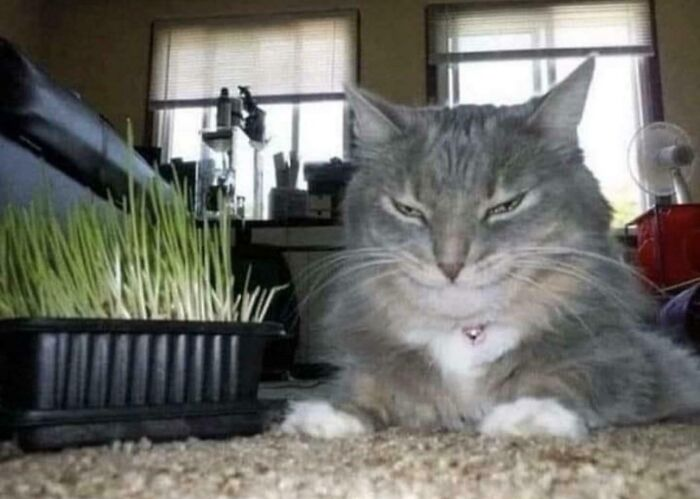
Behavioral psychologists highlight that the absence of guilt in cats reflects their unique social structure. Unlike dogs, cats are solitary hunters and don't have the same pack mentality that evokes feelings of remorse.
Dr. Jennifer Shryock, a veterinary behaviorist, explains that this lack of guilt doesn’t mean cats are unfeeling; they simply don’t perceive their actions in the same moral context. Owners can help by redirecting their pets' energy into more productive outlets, like interactive toys or puzzle feeders.
Still, the comedy lands because the community keeps it light. The creator’s goal is simple. “The intent is to be humorous and fun. Like our sub says, it’s ‘For cats plotting, during or in the aftermath of their crimes!’ We’ve got a great community started, so if you’d like to come post, comment, or just watch the hilarious antics, we’d love to have you!”
7. He claims it was an ‘authorized entry,’ but the curtain says otherwise.
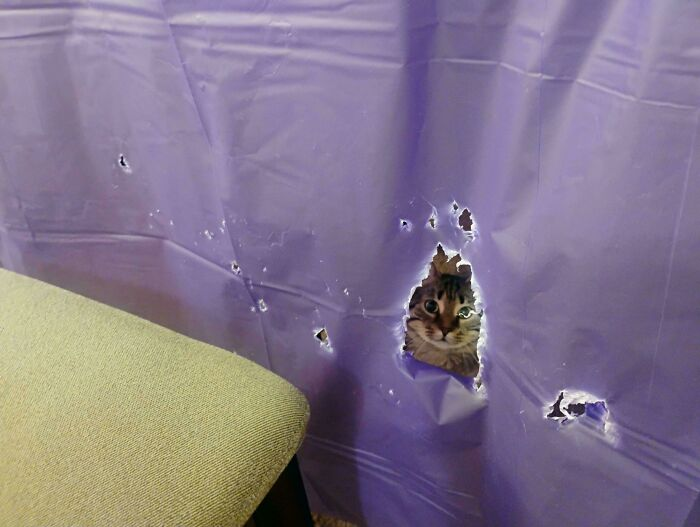
8. When the midnight snack mission goes too well to abandon.
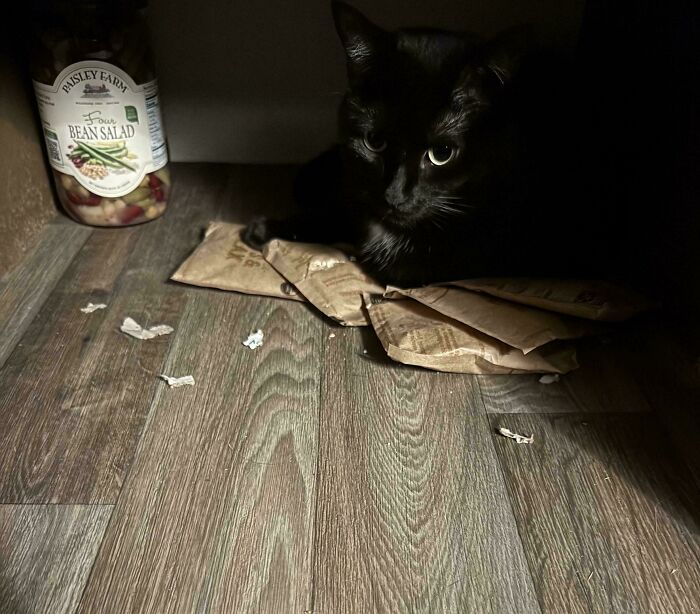
9. NASA called. They want their test subject back.
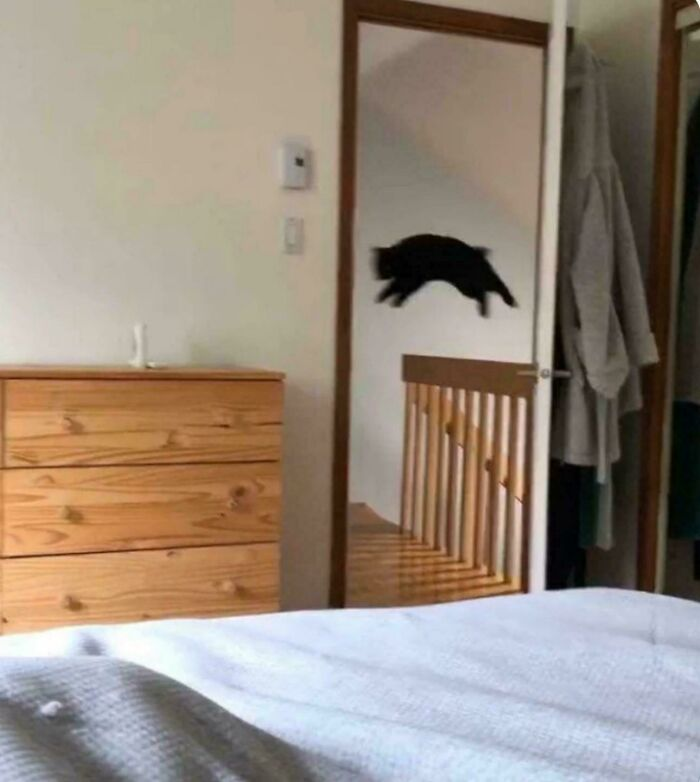
Social Media's Role
The rise of platforms like Reddit for sharing cat antics highlights our fascination with animal behavior. Dr. Karen Becker, a veterinarian and animal advocate, points out that this trend reflects our desire for community and connection through shared experiences.
Communities centered around pets foster a sense of belonging among members. Engaging with these platforms can be beneficial for cat owners, offering tips and advice from others who face similar challenges in managing their pets’ behaviors.
10. A crime of passion, with zero remorse.
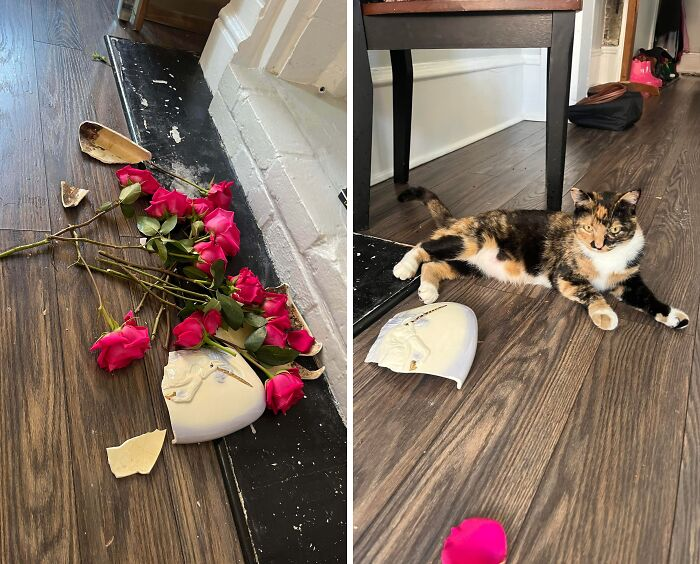
11. Caught yellow-pawed and still acting offended.
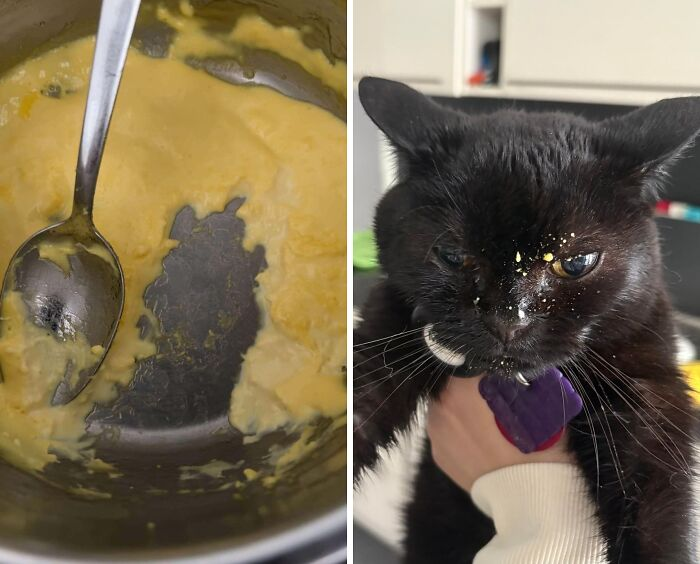
12. Neighborhood freeloader strikes again. Victim remains polite.
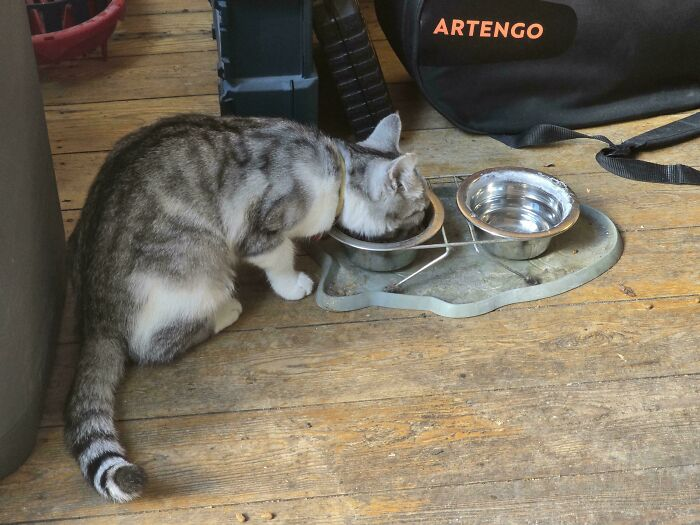
Experts in animal welfare stress that understanding feline psychology is crucial for preventing mischievous behaviors. Providing a stimulating environment with scratching posts, climbing structures, and interactive toys can significantly reduce undesired activities.
According to Dr. Mikel Delgado, a cat behavior consultant, enriching a cat's home can prevent them from engaging in destructive behavior. She recommends incorporating playtime into daily routines to channel their energy positively.
13. Every Monopoly game has that one player who takes things personally.

14. Local feline caught in emotional and physical confinement.

15. When curiosity and physics stop returning each other’s calls.
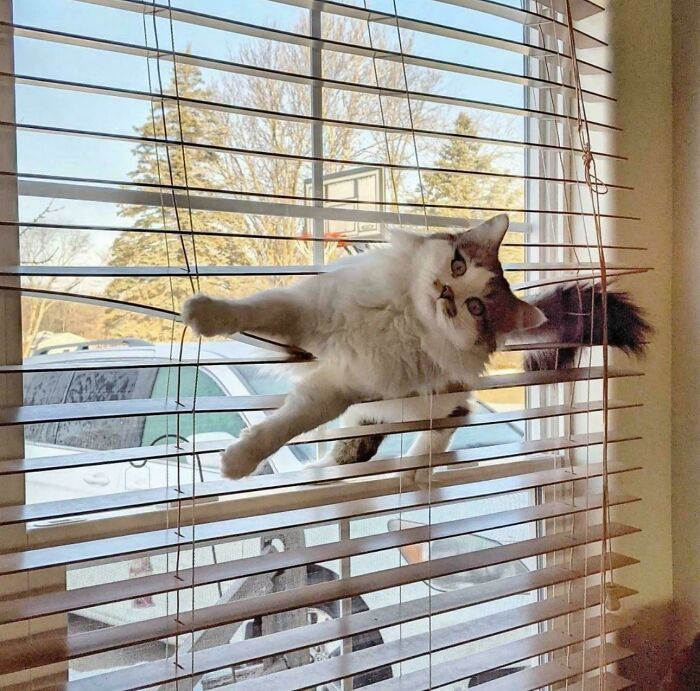
Understanding Cat Mischief
Dr. Temple Grandin, a renowned animal behavior expert, suggests that mischief in cats often stems from boredom or lack of stimulation. Cats are naturally curious creatures, and if they aren't mentally or physically engaged, they can turn to 'heists' as a form of entertainment.
Grandin emphasizes the importance of providing a variety of toys and interactive play sessions to keep them engaged. This proactive approach not only curtails destructive behaviors but also strengthens the bond between cat and owner.
16. Local cat demands passage… and perhaps your soul.
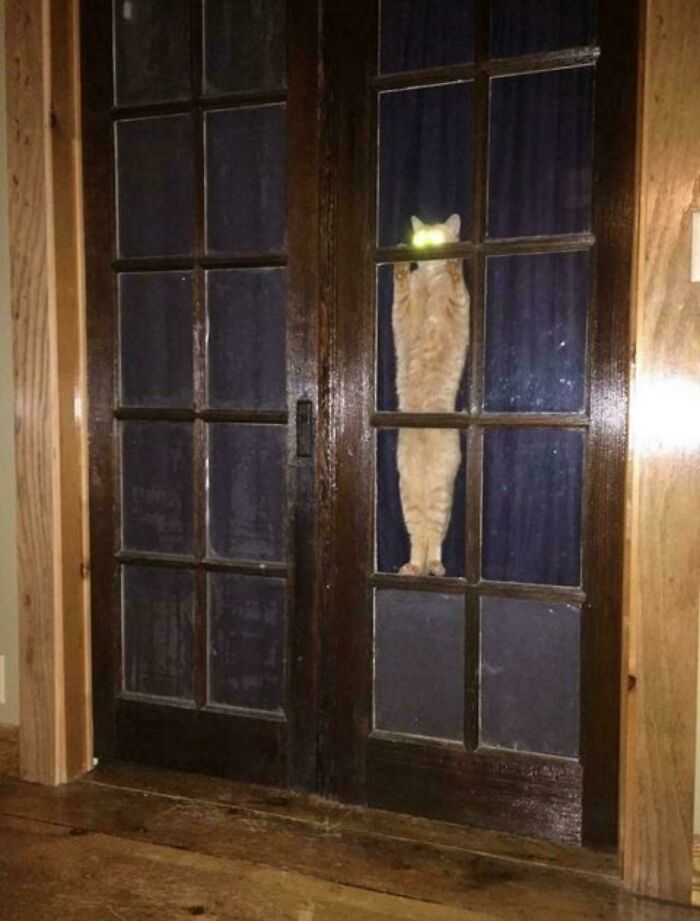
17. Every villain needs a good hiding spot—and dramatic lighting.
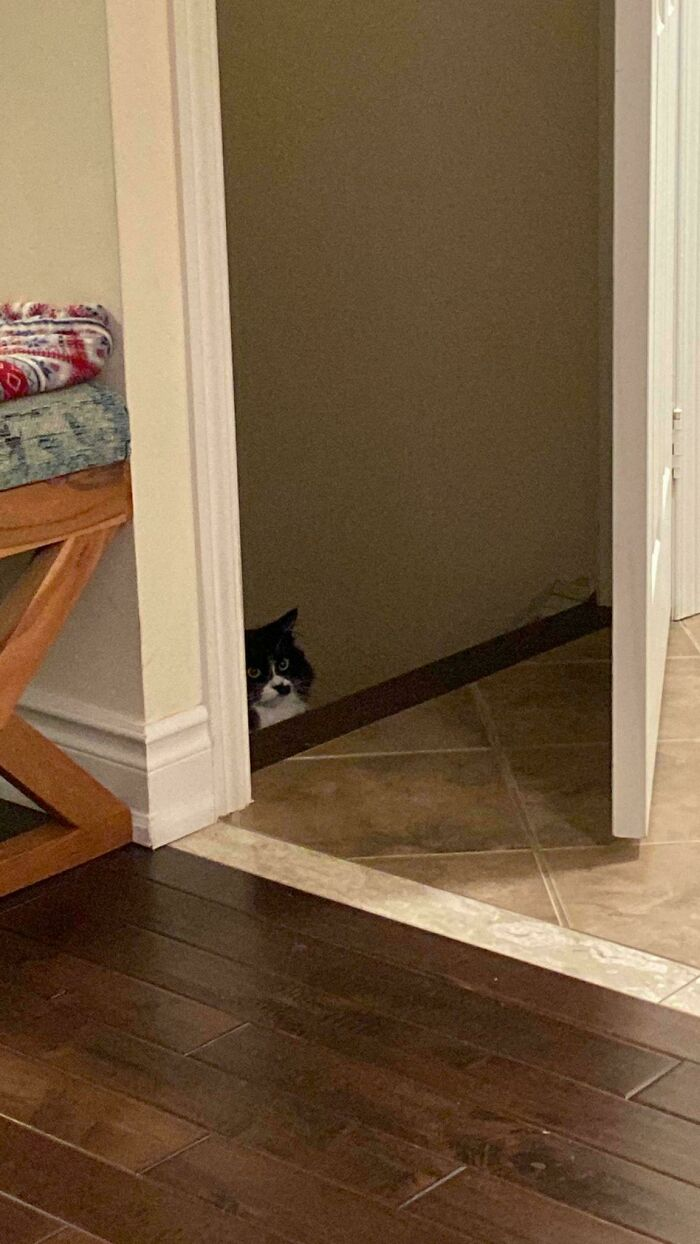
18. Partners in crime caught mid-escape, pretending it’s modern art.
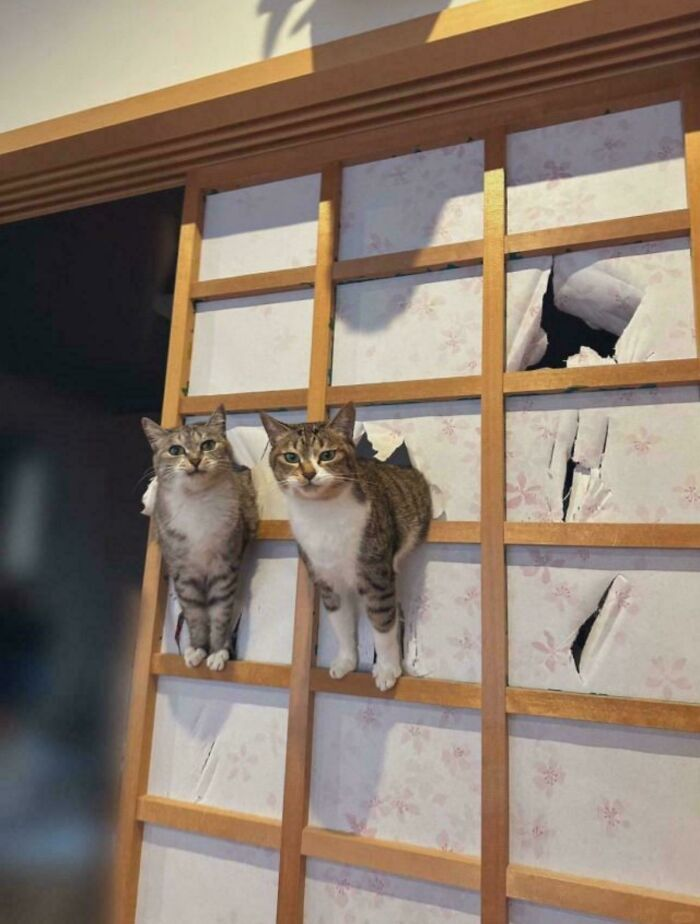
Psychologists argue that the concept of 'cat shame' as portrayed in viral videos is a humorous reflection of our human tendency to anthropomorphize animals. Dr. Jennifer D. L. Smith, a cultural psychologist, notes that this phenomenon underscores our need to ascribe human emotions to pets.
While entertaining, it's essential to remember that cats don’t experience shame like humans do. Instead, they live in the moment, driven by instinct and curiosity, which is a vital aspect of their charm.
19. Copper doesn’t steal food—he collects ‘donations’ through intimidation.
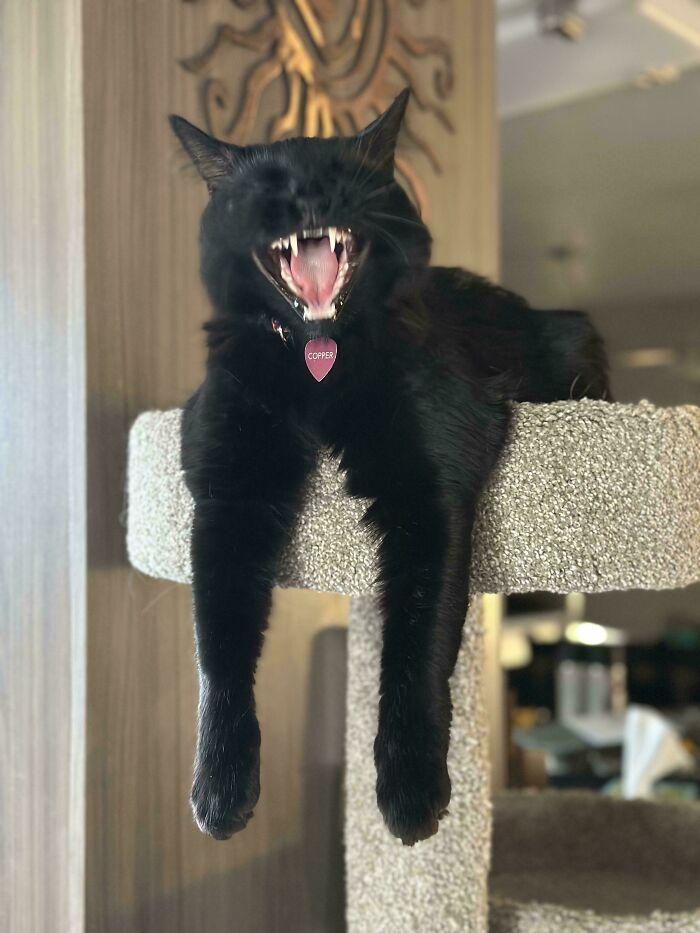
20. Caught red-pawed mid-heist. Drawer contents classified.
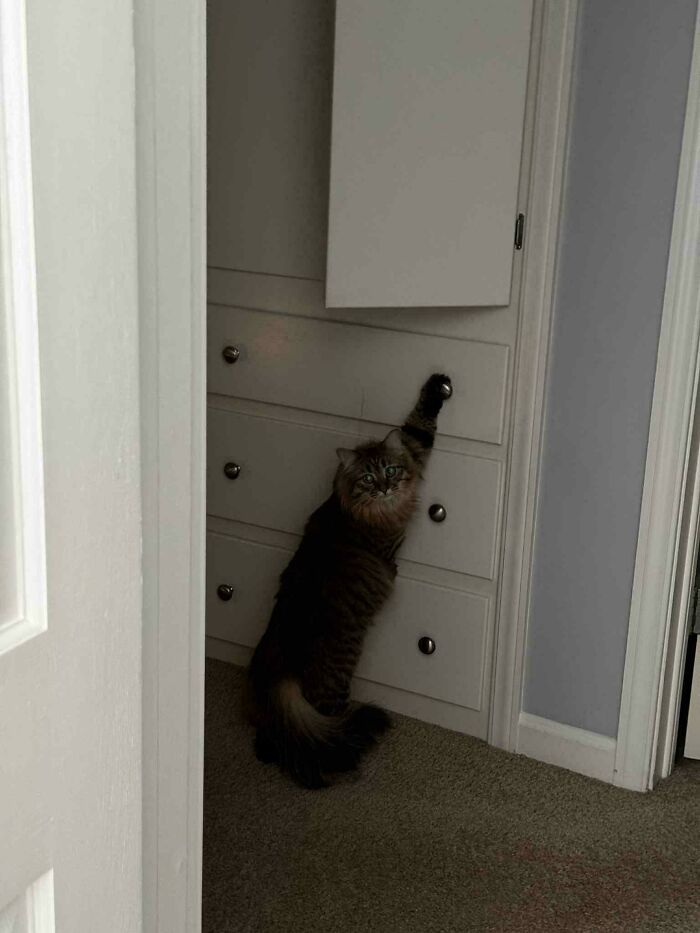
21. Looks like someone’s under house arrest with visitation privileges.

Creating a Cat-Friendly Environment
Many experts recommend creating an environment that caters to a cat's natural instincts to mitigate their heist-like behavior. Dr. Elizabeth Colleran, a feline veterinarian, suggests incorporating vertical spaces for climbing and perching to satisfy their exploratory nature.
Additionally, engaging them in active play, such as laser pointers or feather toys, can redirect their energy positively. By fostering an environment that satisfies their instincts, owners can prevent unwanted behaviors and enjoy a more peaceful household.
22. The face of a cat who just heard the word ‘vet.’
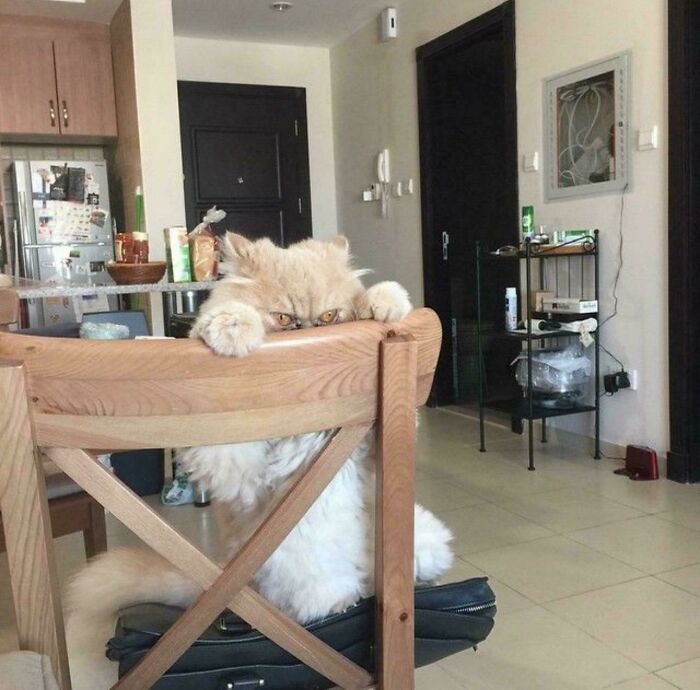
23. Caught mid–karate practice with the dining room furniture.
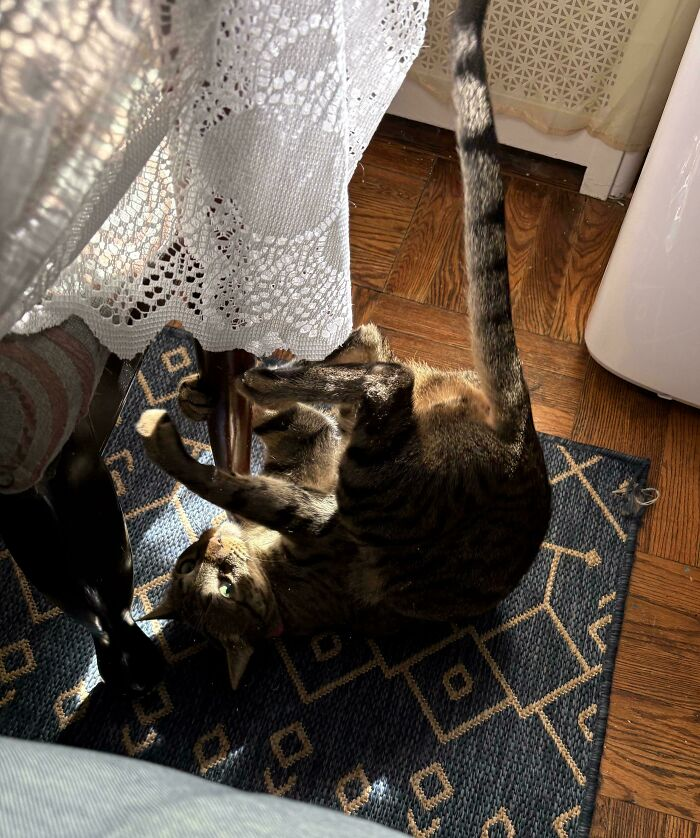
24. Caught in the act of a full-scale Croc heist.
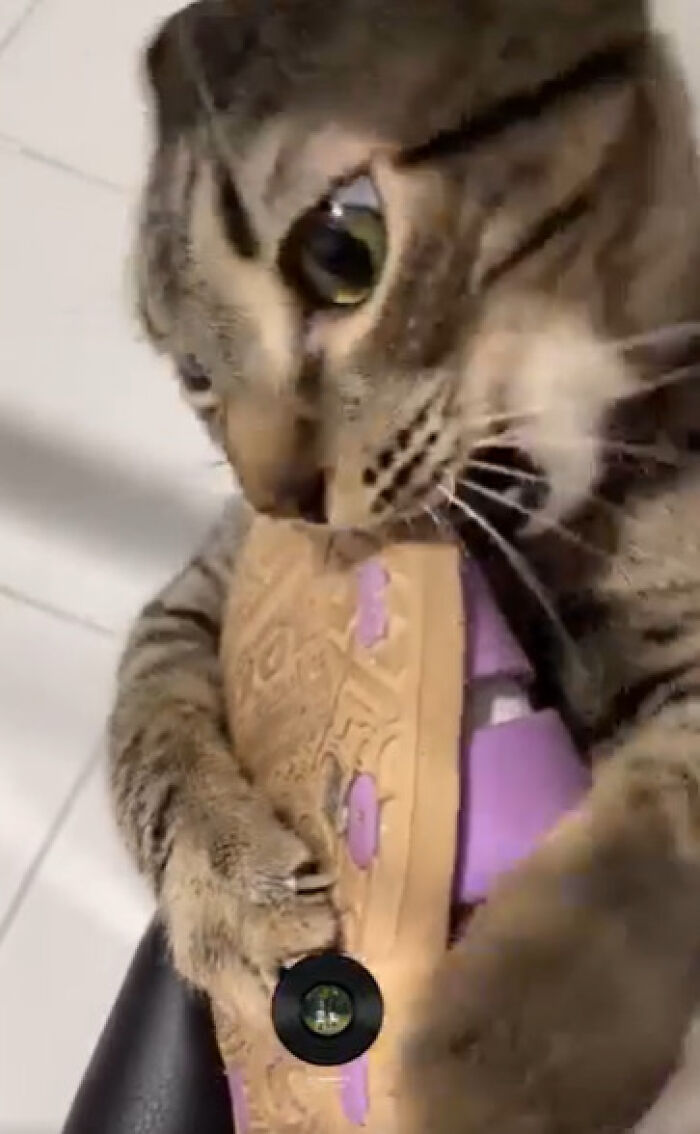
Animal psychologists often suggest that mischief may also be a result of anxiety or stress in cats. Dr. Sophia Yin, a veterinarian and animal behaviorist, emphasizes that understanding a cat's emotional state is crucial for addressing their behavior.
She recommends enriching their environment with calming elements, such as cozy hiding spots or pheromone diffusers, to reduce anxiety. By addressing the root causes of mischief, owners can foster a more harmonious living situation for both cats and humans.
25. Laughs in chaos. Plots next move.

26. Crime scene reenactment: the suspect claims to have ‘fallen victim to gravity.’
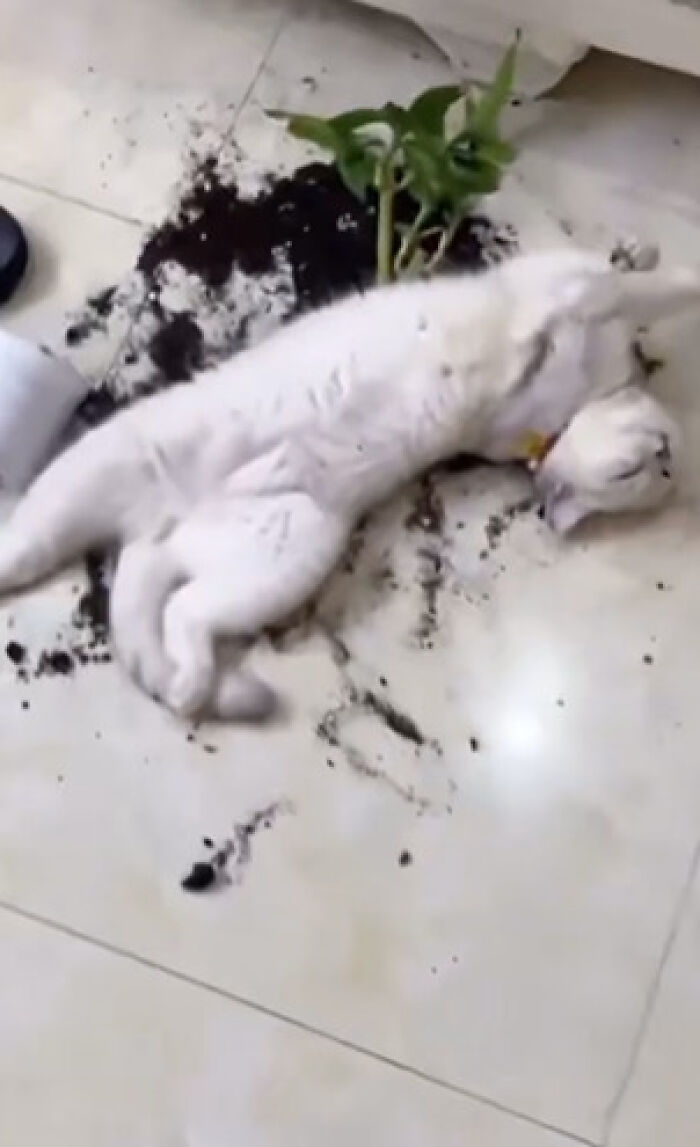
27. One handles the distraction. The other handles the getaway.
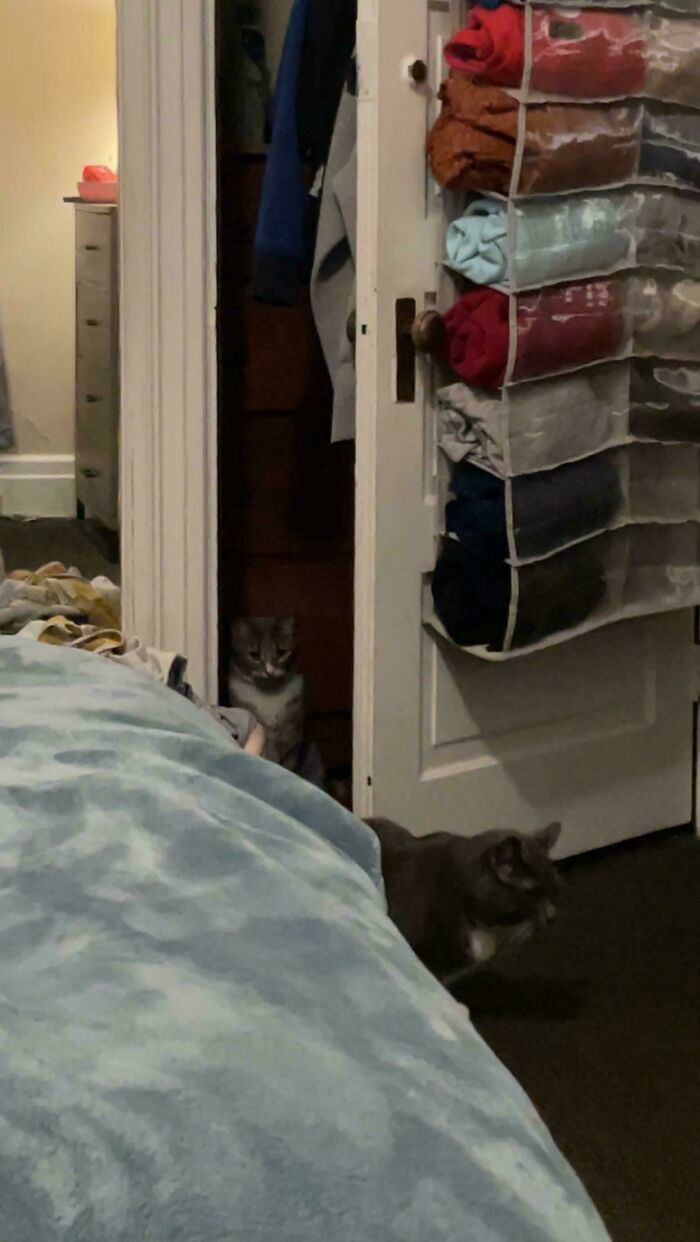
Digital Communities and Learning
The phenomenon of crime cats on social media reflects a broader societal trend toward digital storytelling and community engagement. Dr. D. A. F. Bailey, a media studies expert, notes that these platforms allow users to connect through shared interests and experiences.
As users share their cats' antics, they not only entertain but also educate one another about feline behavior. This communal learning can lead to better cat ownership practices, as owners share tips and solutions for managing their pets' mischievous moments.
28. When your stealth level is 99 but gravity still wins.
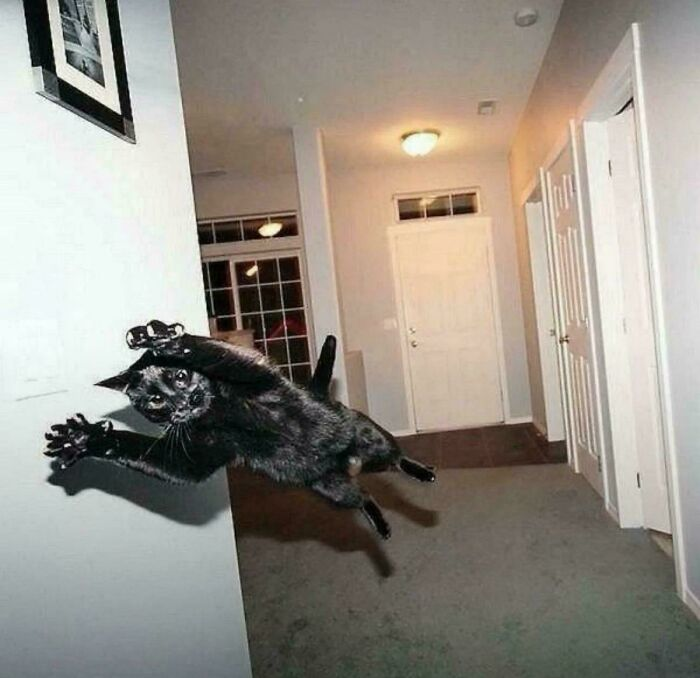
29. He swears he just found the evidence like that and was about to report it.

30. Summoning the ancient spirits of unlimited treats.

Psychologists explain that sharing amusing cat stories serves a therapeutic purpose for many people. Dr. Sonja Lyubomirsky, a happiness researcher, highlights that humor can act as a coping mechanism, alleviating stress and promoting well-being.
When people laugh at these feline misadventures, they're not just entertained; they're also engaging in a form of stress relief. This underscores the importance of finding joy in everyday moments, which enhances overall mental health.
31. Caught red-pawed during a snack heist. Zero shame, full crunch.
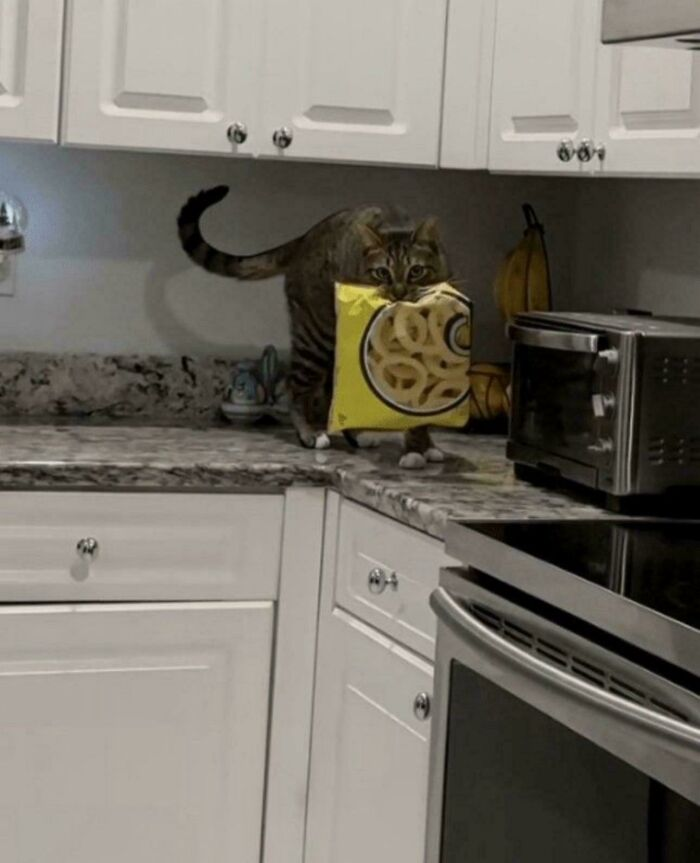
32. Negotiations between rival crime families broke down immediately.

33. Caught mid-cleanup, trying to erase the evidence.
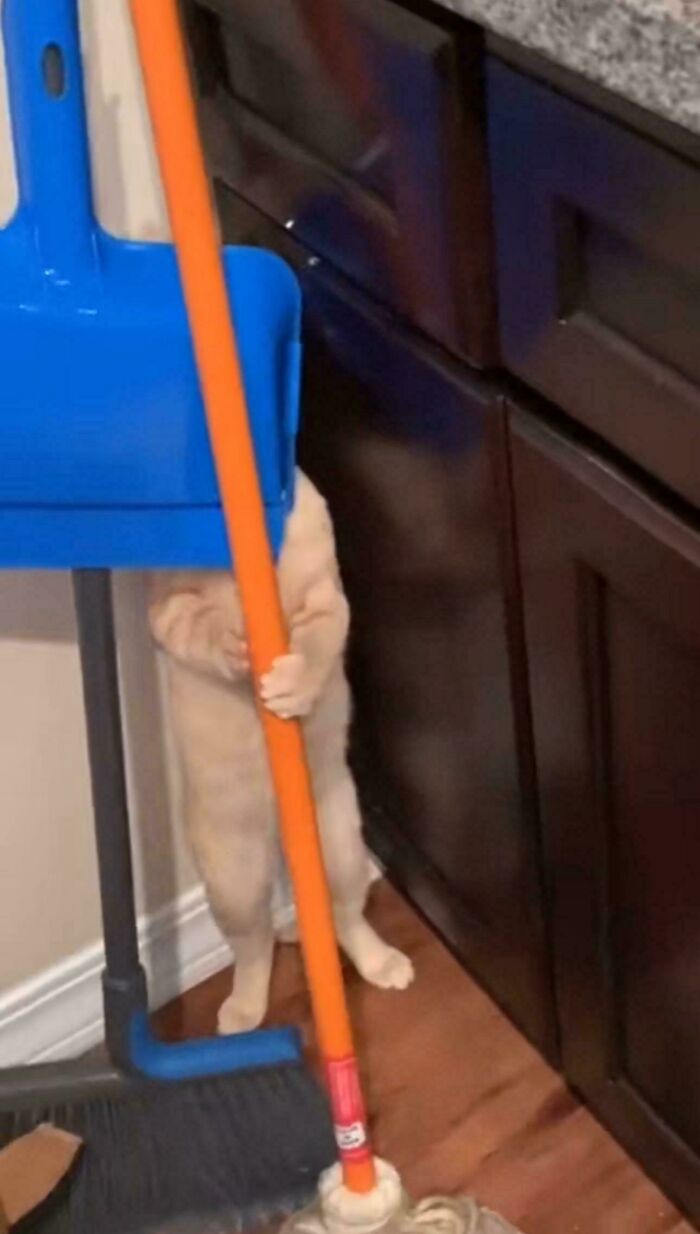
The Importance of Play
Experts suggest that regular playtime is crucial for a cat's mental and physical health. Dr. Jennifer Coates, a veterinarian, emphasizes that interactive play helps satisfy a cat's predatory drive while strengthening the bond with their owner.
Coates recommends setting aside time each day to engage in play, using toys that mimic hunting behavior. This not only curtails mischief but also promotes a happier, healthier cat overall.
34. He swears the toilet paper attacked first.

35. Neighborhood Spider-Cat strikes again.

36. Tour de Nap starts whenever he’s ready.
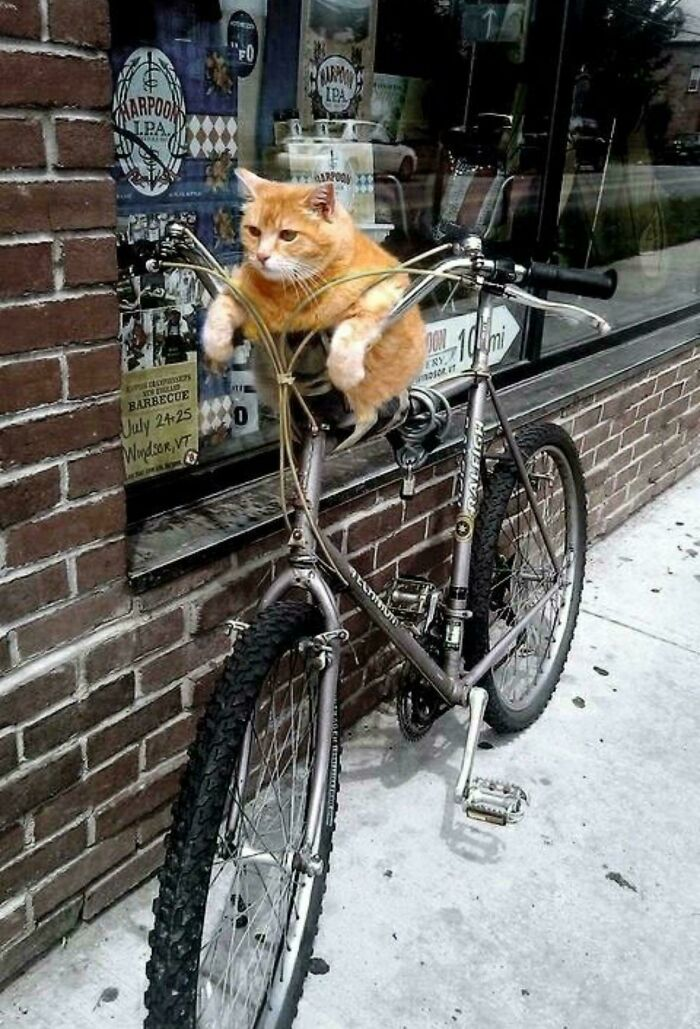
Animal behaviorists often observe that cats engage in heist-like behavior as a way to express their independence. Dr. John Wright, a feline expert, notes that this independence can be both charming and challenging for owners.
Wright suggests that understanding the reasons behind these behaviors can help owners respond more effectively. Patience and consistent training can guide their cats toward more acceptable behaviors while still allowing them to express their natural instincts.
37. That’s not a cat. That’s a clingy life choice.

38. Denied entry but plotting corporate takeover.
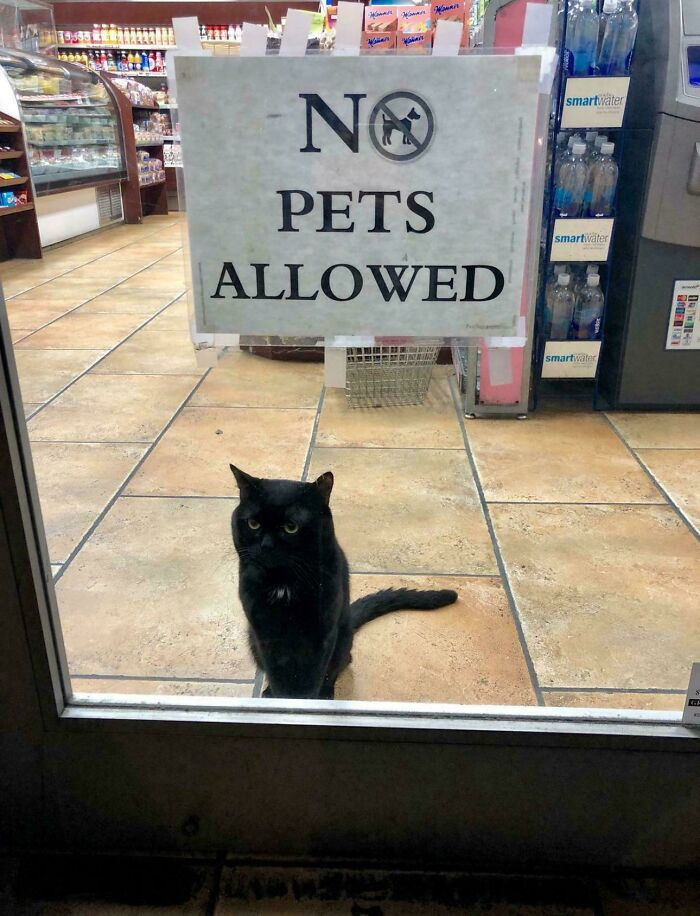
39. She didn’t steal it. She liberated it.

Cultural Perspectives on Pets
Anthropologists note that societal views on pets have evolved, leading to increased emotional investment in their well-being. Dr. Patricia McConnell, an animal behaviorist, emphasizes that modern pet owners often see their pets as family members.
This cultural shift is reflected in the way people share and respond to their pets' antics online. By treating cats as integral parts of the family, owners develop deeper emotional connections, which can improve both their lives and their pets’.
40. Local cat invents advanced ambush technology. Birds still not fooled.
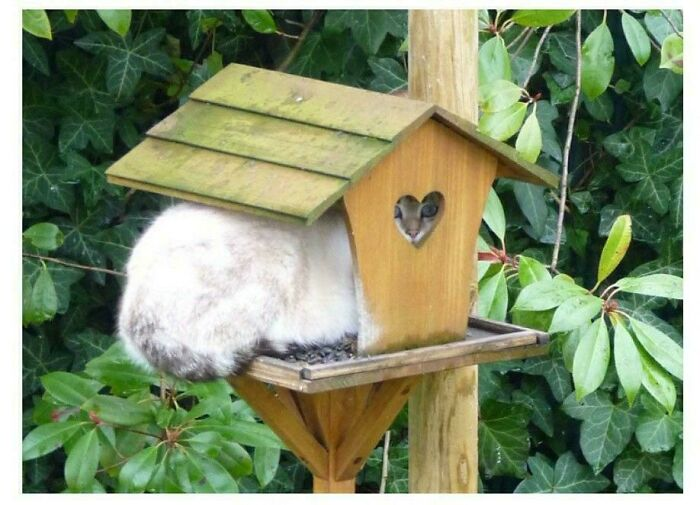
41. That’s the face of someone who’s seen the bottom of the food bowl one too many times.

42. Caught mid–Mission Impossible, right before gravity filed a complaint.

Veterinary behaviorists encourage owners to observe their pets' body language to understand their motives better. Dr. Karen Overall, a veterinary behaviorist, explains that recognizing signs of stress or boredom can preemptively address potential mischief.
By learning to interpret a cat's body language, owners can create a more harmonious environment. This not only prevents destructive behaviors but also contributes to a healthier, more fulfilling relationship between cat and owner.
43. Operation Snack Retrieval: executed flawlessly, calories well earned.
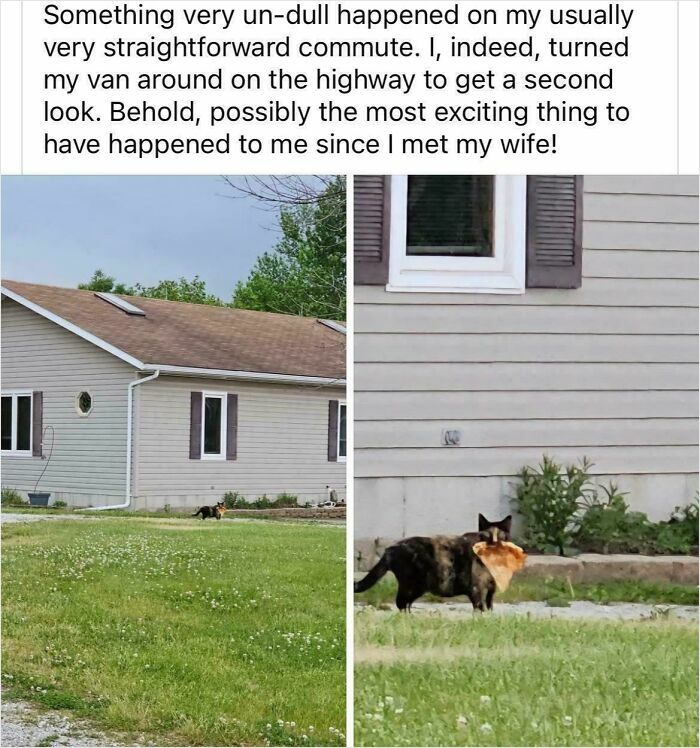
44. Stealth mode: activated. Target: absolutely nothing.
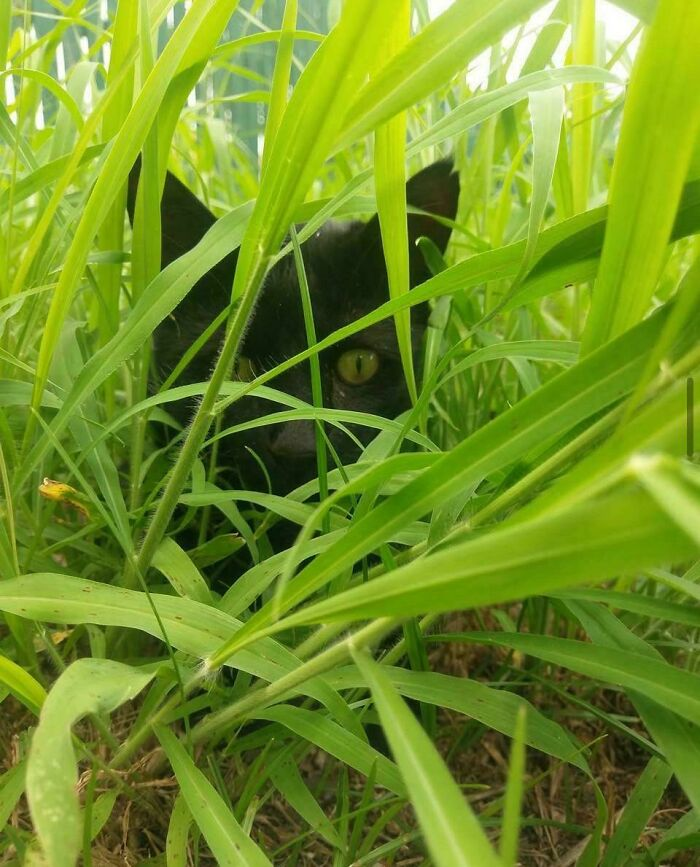
45. Their supervisor would like to discuss productivity.
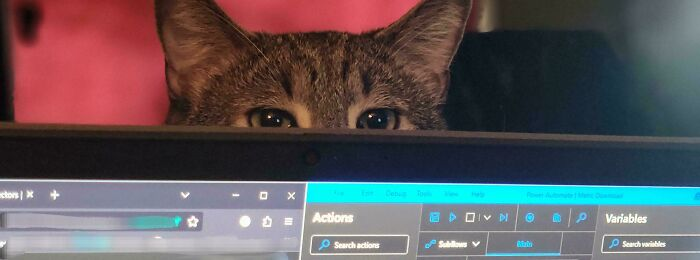
The Role of Routine
Experts emphasize the importance of establishing a consistent routine for pets. Dr. Sophia Yin advises that predictable schedules can significantly reduce anxiety in cats, leading to less chaotic behavior.
Owners can implement regular feeding, play, and quiet times to help their cats feel secure. By fostering stability, owners can help prevent the mischief that often accompanies uncertainty, leading to a more peaceful home.
46. Mission Impossible: Living Room Edition.

Maybe that’s the magic of Crime Cats. It invites us to witness curiosity in all its messy, ordinary glory. No villain arcs. No perfect pets. Just small creatures testing the world and occasionally wearing it like confetti. We laugh because the damage is minor and the timing is perfect. We stay because these snapshots feel like a shared language for people who love animals and need a moment of levity.
What’s your favorite cat “charge,” and how did the defendant plead? Drop your case file in the comments, tag a fellow cat person, and share this with the friend who still thinks the plant jumped on its own!
The phenomenon of crime cats captivates audiences for a reason: it taps into our shared love for animals and the humor of their antics. Experts like Dr. John Bradshaw and Dr. Karen Becker remind us that these behaviors stem from natural instincts and curiosity.
By creating enriching environments and fostering engagement, pet owners can reduce mischief and enhance their cats' well-being. Embracing the quirks of our feline friends, while understanding their needs, allows for a more harmonious coexistence that benefits both pets and their owners.

